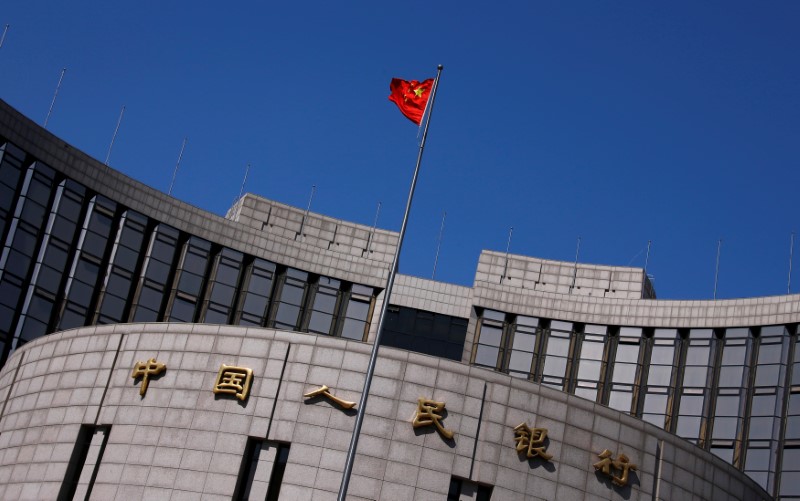 © Reuters. FILE PHOTO: A Chinese national flag flutters outside the headquarters of the People’s Bank of China in Beijing
© Reuters. FILE PHOTO: A Chinese national flag flutters outside the headquarters of the People’s Bank of China in BeijingBEIJING (Reuters) – China’s central bank said on Thursday it will maintain a prudent, neutral monetary policy, neither too tight nor too loose, and keep liquidity reasonably ample.
The People’s Bank of China (PBOC) will guide reasonable growth of money supply, credit and total social financing, the bank said in a statement after a second-quarter meeting of its monetary policy committee.
The central bank will pay close attention to global and domestic economic and financial changes and make sound assessment of economic conditions and fine-tune policy in a preemptive manner, it said.
“Prudent and neutral monetary policy has achieved good results, structural deleveraging has been steadily advancing, and the effectiveness of financial risk prevention and control has begun to show up,” the central bank said.
“The prudent monetary policy remains neutral, it should neither be tight nor too loose,” it said, adding that multiple policy tools were at its disposal.
The central bank also pledged to deepen financial system reform and control “the strength and rhythm of structural deleveraging”.
The PBOC said on Sunday it would cut the amount of cash that some banks must keep in reserves by 50 basis points to accelerate the pace of debt-for-equity swaps and spur lending to smaller firms.
The cut in the reserve requirement ratio (RRR) is the central bank’s third in 2018, and came amid worsening trade tension between China and the United States as well as the U.S. Federal Reserve’s monetary tightening this year.
A Chinese central bank adviser said he expected M2 money supply growth this year to be higher than that of 2017, state media reported on Thursday.
Fusion Media or anyone involved with Fusion Media will not accept any liability for loss or damage as a result of reliance on the information including data, quotes, charts and buy/sell signals contained within this website. Please be fully informed regarding the risks and costs associated with trading the financial markets, it is one of the riskiest investment forms possible.
Source: Investing.com


























